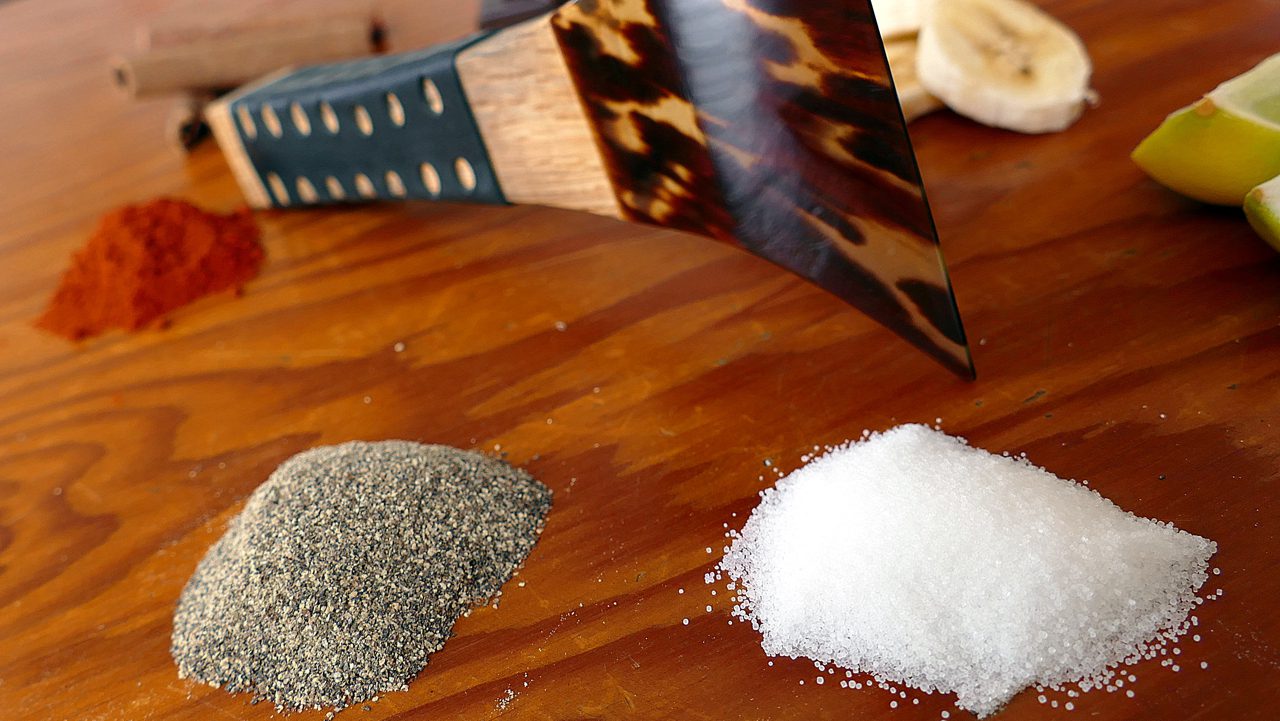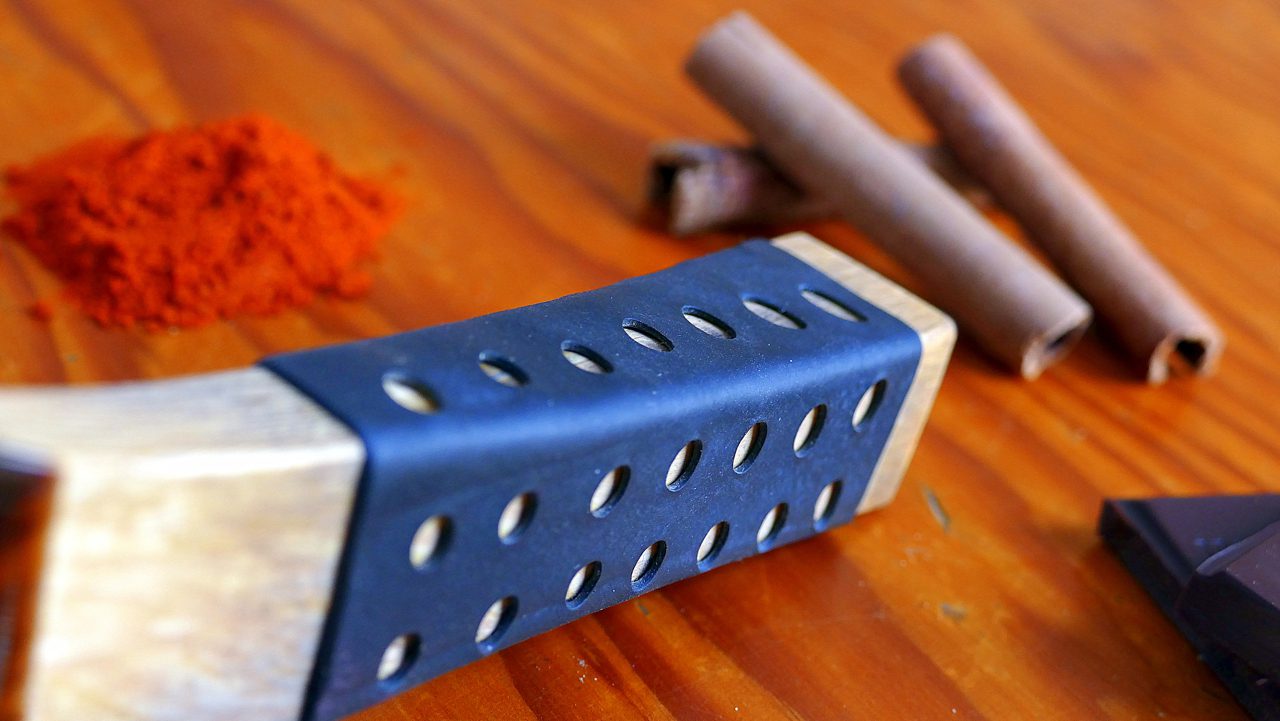Back in 2015, my friend Adrian and I led regular group lessons in San Jose California. Our group played some Minyo (Japanese folk songs), and we added solo parts in-between verses to let students build their improvisational skills.
Our group lesson practicing Mike Penny’s Chop Builder!
Recently, one of the students (Let’s call him Chris) noticed that both Adrian and I always begin solos far from the koma (bridge), starting with a quiet sound. He wondered why we do that?
I thought about it for a moment, and basically realized that once again it comes down to…

Though the exact history is debatable, it’s a widely accepted fact that the shamisen’s ancestor is the Chinese Sanxian. The Sanxian also made it’s way to Okinawa, where it was adapted and became the Sanshin.
The Sanxian
The Sanshin
While both SanXian (三弦) and Sanshin (三線) literally translate as “Three Strings”, the Shamisen (三味線) literally translate as “Three Flavor Strings”.
I’ve never known exactly why the word ‘flavor’ is used, though it is fun to announce, “Ladies and gentleman, it’s time to listen to the soothing sounds of the ol’ Flavor Strings!” However, I’ve gained so much respect for the word ‘flavor’ as I’ve reached greater fluency over the years. Who knows if a deeper meaning for the word was intended, (probably not) but to me, it’s almost a perfect description of shamisen!

Initially, the ultimate goal of playing shamisen is simply to play the correct notes in correct order without accidentally striking the wrong string. That’s about it! Of course, that’s always the first goal when starting a new instrument or language. Keeping it simple and practical until it becomes natural.

A time when young Kyle’s ultimate goal was to learn a minyo piece note-for-note (smiling came later)
When natural fluency is achieved, the brain won’t need to actively focus on the strings, and so is open for new insights and observations. When this happened with me, the idea of flavors started to sink in.
Fundamentally, the shamisen really isn’t a difficult instrument. (The bachi is another story) It only has three strings and is mostly melodic based. Having a low entry point (a good thing!), complete beginners can get started and play a simple song right away. (Simple to start, but like any instrument, has unlimited potential.)

Everyone can start shamisen!
For me, this is where the concept of flavors come in. This simple instrument has a multitude of ways to easily change the tone and feeling of a song. Even playing a simple song, there are so many ways we can transform the feeling by adding flavors with our shamisen.
Basic
1) Striking the string closer/farther from the bridge (Affects volume and sharpness)
2) Use of hajiki, uchi and sukui techniques (each gives a unique tone to sounding a note)
Advanced
3) Simultaneously touching touching the string with your thumb as the bachi strikes down. (Creates subtle harmonic tone, dampening
4) The immensely wide variety of slides and vibrato you can create from the fretless neck.
This is just a small selection of the wide flavors available. While these are properly called “techniques”, techniques for shamisen are usually something pre-determined. When learning a song (Sakura Sakura, for example), one will read the song notation to find which/where each technique is executed. It’s static and fixed.

Example of techniques written in notation (shown under numbers)
Now, that’s great if the goal is to play in a formal ensemble, but for the emotion-expressing side of shamisen, I much prefer the term ‘flavors’ because how I use them is very personal. Like flavors and food, it’s all a matter of taste.

I like to compare shamisen with a basic stir fry. Stir fry is a combination of vegetables and meat which are simply chopped up, thrown into a wok and all cooked together. Nothing technically fancy, but the amount of flavor can be huge depending on the ingredients you put in. An ideal balance of ingredients should result in the most amazing stir fry. For example; cool cucumber, spicy pepper, sweet carrots, slightly bitter bok choy, and sour citrus would encompass all the senses on the palate. Of course, you can put in whatever you like when cooking for yourself. (E.g, taking my pop’s approach: dumping on the chili pepper, covering any flavor with fire)

That’s why I find shamisen and food so similar. Like ingredients in a simple stir fry, there are so many flavors we can add to our three strings. A whole menu of ingredients are at my fingertips and I have the power to make turn my shamisen jams into a sensual experience. This is a liberating concept, because just like cooking for yourself, nobody can demand what flavors you should or shouldn’t use. The flavors you add come from your personal taste, and that should be respected and celebrated!

Returning to Chris’s question; When Adrian and I play solos, why do we start quiet and then build up volume? The answer is ultimately to bring out the flavors of our shamisen through the song.

Adrian and I performing as “ShamiSpice”
A big part of bringing out flavors is contrast. In our class, the song’s verse section is usually the loudest because everyone’s playing at the same time. If it’s loud, what’s a better way to add flavor than to start our solo quietly? By going from loud to quiet, we have just instantly added flavor right there.
How about sounding a string when our finger is pressed on it?

If our finger is stationary when the string is struck, the tone will be plain, and will soon fade.
However, if we continuously rub the string (vibrato), that lengthens the string’s resonating tone, adding a considerable amount of flavor. (Learn more about vibrato in Reigen Fujii’s Advanced Skills lesson!)
This whole concept goes beyond simply playing an instrument. Rather, it’s a basic awareness for our senses.
When a stir fry is very salty, the palate becomes desensitized to the salt and you won’t notice it anymore. In this case, an absence of salt almost adds more flavor/contrast than the inclusion of it.
Likewise, if you add vibrato to every single note, the sensory stimulation from that ‘technique’ will fade, to which the tone without vibrato will have more contrast.
The presence or lack of contrast is not a good nor bad thing. Rather, when you are aware of it and have a sense of your personal tastes, you can use these principles to really nail down your tone and style.
Personally, I love constant vibrato and would prefer the lack of it to be more noticeable than the presence of it.
Another example – The modern tsugaru aesthetic encourages playing in ushirobachi position (closer to the bridge) for a booming tone.
In the modern tsugaru style, ushirobachi position is the center of the dou, which yields the loudest strikes
Well, when not playing in tsugaru style, I prefer the booming tone to have greater contrast, so I will play in ushirobachi position sparingly to make that powerful tone more pronounced.
Though this concept may take years to fully internalize, we can start trying today! The first step is to put down the notation! Notation is a great way to learn and remember new songs, but it’s easy to become dependent on it. Something people will use even if their hands have already formed muscle memory.
Again, notation has advantages, but once you’ve memorized the song, it’s beneficial to stop using it and focus on the essence of music, feeling and flavors!
So the first step, choose a song you can play comfortably. For example, Sakura, Kuroishi Yosare Bushi (from the Crash Course ), Happy Birthday, or anything you can play comfortably without notation.
Next, play your memorized song a few times, listening to the tone of your strings. As you play, move the bachi closer/farther from the bridge and notice how the tone changes. If you’re experienced, use techniques like sukui with varying degrees of force in the pullback and notice how that affects the tone of your shamisen and the feeling of the song in general. Most importantly, don’t worry about playing anything “wrong”. Just observe what you play and the reaction you feel afterwards. (Just like when I tell dirty jokes at the formal ball!)
Made some cool flavor arrangements? Make a video and share below!
I’ll start off by sharing my arrangement of Sakura!
I encourage you to give it a try and share your discoveries. Remember, what you play is personal taste. Anyway you like to play is the best way!
Bachi on!!
